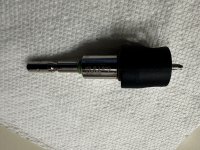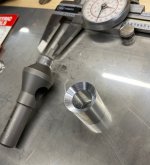squarecut
Member
Can anyone give me the correct Festool part number for a 3.5/13 replacement drill bit for my Centrotec countersink with depth stop unit pictured below. Having difficulty locating the correct part number. need to order replacements. The countersink I have has the Festool number 446106 stamped on it, but searching that number gets me nowhere.
I would appreciate any help finding the correct part number
I would appreciate any help finding the correct part number


